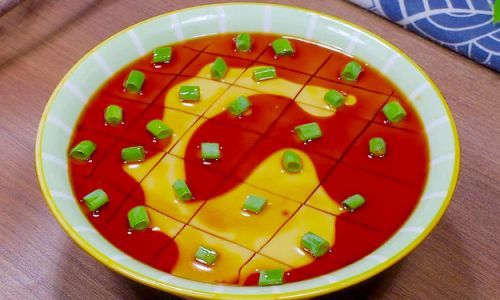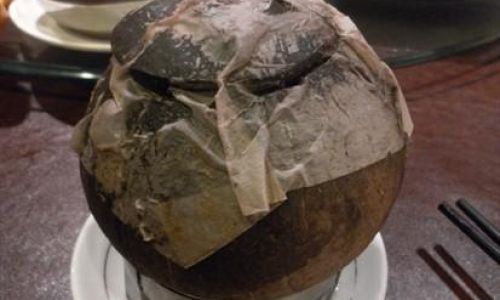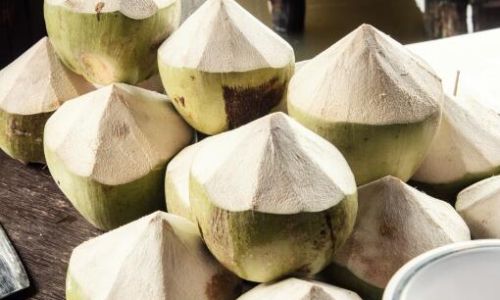Introduction
Steamed egg custard, also known as steamed egg or egg pudding in various cuisines, is a delicate and beloved dish enjoyed worldwide. Its smooth, silky texture and mild flavor make it an ideal choice for breakfast, lunch, or a light dinner. However, achieving the perfect consistency can be challenging, especially for those who are new to cooking this dish. One of the most crucial steps in making steamed egg custard is knowing when it is fully cooked. Overcooking can lead to a rubbery texture, while undercooking may result in a runny interior. In this comprehensive guide, we will explore various methods and techniques to help you determine if your steamed egg custard is perfectly cooked.
Understanding the Ingredients and Preparation
Before diving into the methods for checking doneness, let’s first understand the basic ingredients and preparation steps for steamed egg custard. The primary ingredients typically include eggs, water or milk, salt, and sometimes a touch of soy sauce or mirin for flavor. The ratio of eggs to liquid is crucial; too much liquid can result in a runny texture, while too little can make the custard too dense.

- Eggs: Fresh eggs are preferred as they provide better structure and flavor.
- Liquid: Water or milk can be used. Water tends to yield a firmer texture, while milk results in a creamier consistency.
- Salt: A pinch of salt enhances the flavor.
- Flavorings: Optional ingredients like soy sauce, mirin, or dashi stock can add depth to the dish.
Preparation Steps:
- Mix the Ingredients: In a bowl, gently whisk the eggs with a fork or chopsticks until just combined. Avoid over-mixing, which can incorporate too much air and make the custard less smooth.
- Add Liquid: Gradually add the liquid (water or milk) while whisking gently to avoid creating bubbles.
- Season: Add a pinch of salt and any optional flavorings.
- Strain: Pass the mixture through a fine-mesh sieve to remove any lumps and ensure a silky texture.
- Pour into Steaming Dish: Pour the strained mixture into a heatproof dish lined with parchment paper or greased lightly with oil to prevent sticking.
- Cover: Cover the dish with a lid or aluminum foil to prevent condensation from dripping onto the custard and creating unsightly marks.
Methods to Determine Doneness
Now that we’ve covered the basics of preparing steamed egg custard, let’s explore the various methods to determine if it is perfectly cooked.
Visual Inspection
One of the simplest methods is to visually inspect the custard. However, this method requires some experience and familiarity with the appearance of cooked and uncooked custard.
- Appearance: A perfectly cooked custard will have a uniform, slightly golden hue with no visible liquid pooling on the surface. The edges should be set, but the center may still look slightly jiggly when gently shaken.
- Surface Texture: The surface should be smooth and free of large bubbles or cracks. Small bubbles are normal and can be minimized by careful mixing and straining.
Touch Test
Using a clean finger or the back of a spoon, you can gently touch the surface of the custard to gauge its firmness.
- Gentle Touch: Lightly press the surface with your finger. It should feel firm but still slightly yielding, like the consistency of set but slightly soft jelly.
- Spoon Test: Alternatively, you can insert the back of a spoon into the center of the custard and gently lift it. If the custard holds its shape and doesn’t run, it’s likely cooked. However, be cautious not to pierce the custard too deeply, as this can release steam and cause it to collapse.
Temperature Check

Using a food thermometer can provide a more precise measurement of doneness.
- Internal Temperature: Insert a food thermometer into the center of the custard. The internal temperature should reach approximately 160°F (71°C). This temperature ensures that the eggs are fully set but not overcooked.
- Caution: Be careful not to let the thermometer touch the bottom or sides of the steaming dish, which could give you a false reading due to the heat from the steamer.
Inserting a Toothpick
A toothpick can be a useful tool for checking doneness, especially if you don’t have a food thermometer.
- Insertion: Carefully insert a clean toothpick into the center of the custard.
- Observation: If the toothpick comes out clean or with just a few tiny, moist crumbs attached, the custard is likely cooked. If it comes out with wet, eggy mixture, it needs more time.
Listening for Sounds
While less common, listening for specific sounds can also give you clues about the custard’s doneness.
- Steam Sounds: As the custard cooks, you’ll hear a steady, gentle steaming sound. When the sound becomes less intense or stops altogether, it’s a sign that the custard is nearing doneness. However, this method is less reliable and should be used in conjunction with other methods.
Using a Skewer or Chopstick
Similar to the toothpick method, a skewer or chopstick can be used to test for doneness.
- Insertion: Insert a skewer or chopstick into the center of the custard.
- Feel: The skewer or chopstick should meet with slight resistance but should slide out smoothly without dragging any liquidy mixture.
Cooking Time Guidelines

While not a foolproof method, cooking time can provide a general guideline for doneness.
- Standard Cooking Time: Over medium-low heat, steamed egg custard typically takes around 10-15 minutes to cook through. However, this can vary depending on the size and depth of the steaming dish, the amount of custard, and the intensity of the heat.
- Adjustments: Always start with the lower end of the cooking time range and check for doneness before adding more time. If the custard is not fully set, you can steam it for an additional 2-3 minutes and check again.
Troubleshooting Common Issues
Even with the best intentions and techniques, issues can still arise when steaming egg custard. Here are some common problems and how to troubleshoot them:
- Runny Center: If the center of the custard is still runny, it likely needs more steaming time. Check for doneness using one of the methods above and steam for an additional 2-3 minutes, then check again.
- Cracks on the Surface: Cracks can form due to sudden temperature changes or over-mixing. To prevent cracks, avoid stirring the custard vigorously after pouring it into the steaming dish and ensure a gentle steaming process.
- Watery Texture: This can be caused by too much liquid or undercooking. Adjust the egg-to-liquid ratio and ensure the custard reaches the correct internal temperature.
- Overcooked Texture: Overcooking can make the custard rubbery and dry. Always check for doneness early and remove the dish from the steamer as soon as it’s fully cooked.
Conclusion
Achieving the perfect steamed egg custard requires attention to detail, patience, and a combination of the methods discussed above. By carefully monitoring the cooking process and using a combination of visual inspection, touch tests, temperature checks, and other techniques, you can ensure that your steamed egg custard is perfectly cooked every time. Remember, practice makes perfect, and with each attempt, you’ll gain a better understanding of your steamer, ingredients, and the subtle cues that indicate doneness. Enjoy your culinary journey and savor each bite of this delicate, flavorful dish!





0 comments